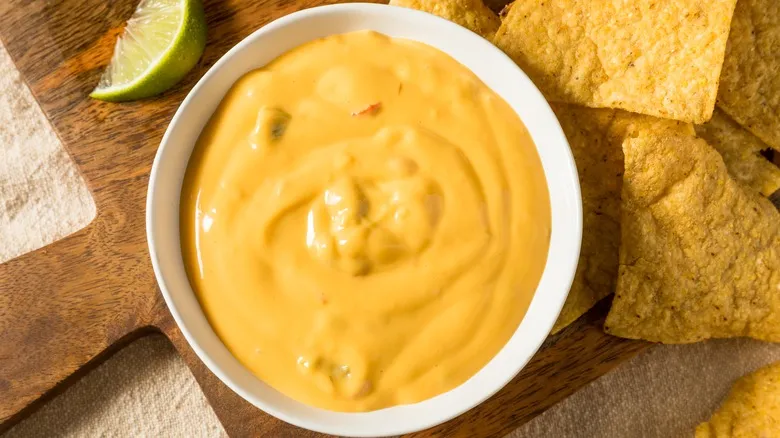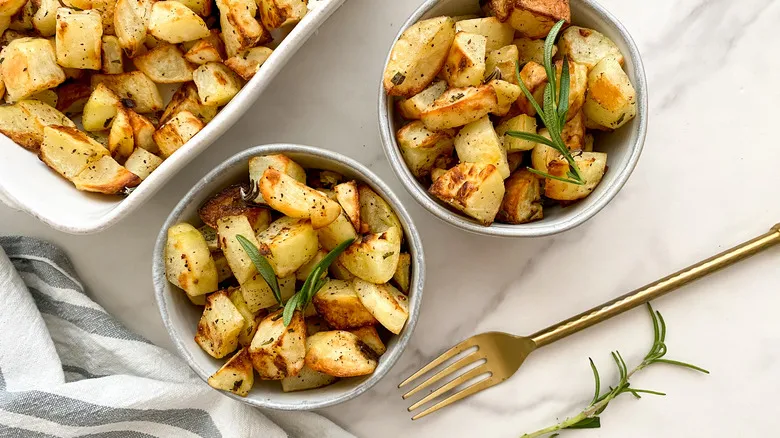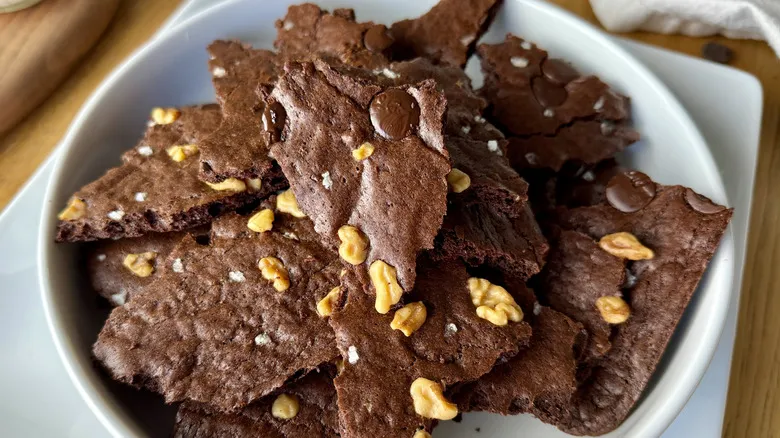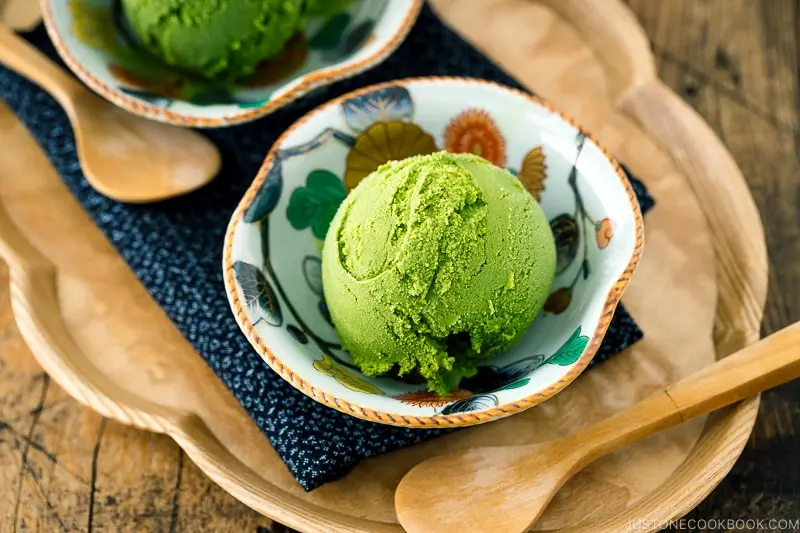Start with the right rolls
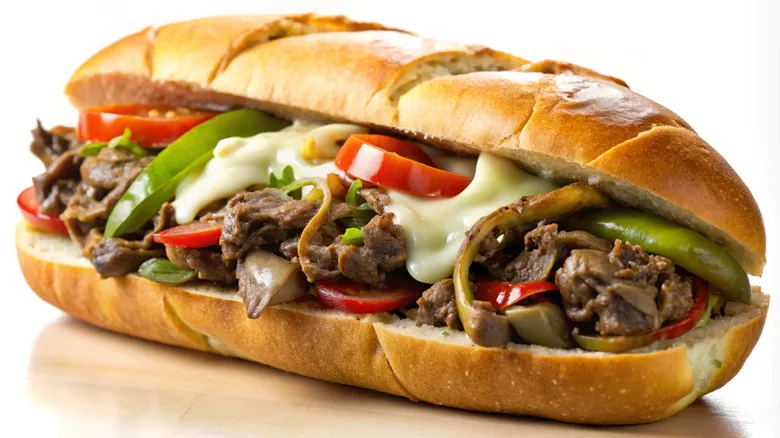
The type of bread is a crucial element in many classic sandwiches—no rational person would consider making a traditional Reuben on raisin bread instead of robust rye slices, for example. While Pat Olivieri originally crafted his first cheesesteak using a hot dog bun (as it was all he had at the time), modern cheesesteak creators are much more discerning about their bread selection. They have discovered that the hearty filling demands a roll that is both sturdy enough to hold the sandwich together and textured enough to offer a satisfying bite. "The bread is everything!" emphasized Gregorio Fierro. "If you live outside the Philadelphia area, finding an appropriate roll can be quite difficult. You want a roll that has a bit of crispness and substance. A roll that is too soft and delicate simply won't hold up."
So, what should an ideal roll look like? In Philadelphia, a popular and widely accepted option is a footlong hoagie roll from Amoroso's, though some sandwich artisans prefer similar rolls from other local bakeries. If you're not in Philly, these may be hard to find, as Fierro pointed out—but for acceptable alternatives, look for rolls with thin, crispy crusts (you shouldn't have to struggle to bite through them) and chewy yet tender interiors. You could even try your hand at making the rolls yourself if you're feeling adventurous.
Good-quality meat makes all the difference
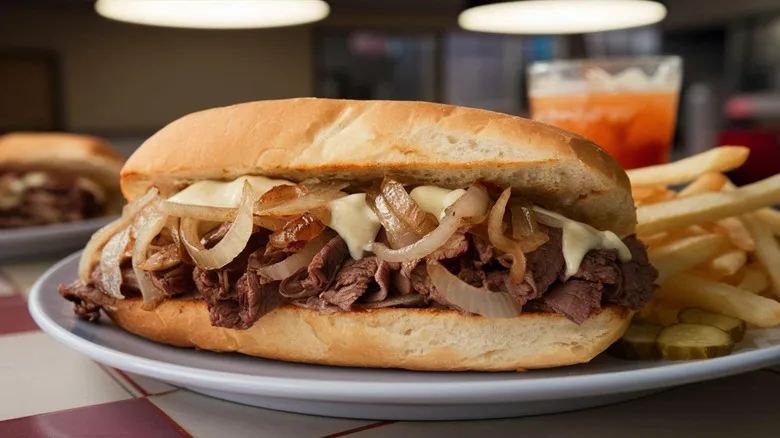
While Pat Olivieri created the first version of the cheesesteak using inexpensive meat scraps from his butcher, modern cheesesteak makers prioritize the quality of their meat. Although cheesesteaks have traditionally been a casual treat for the working class, true enthusiasts understand that compromising on meat quality is simply not acceptable. "Most would agree that thinly sliced beef rib-eye is the gold standard," Gregorio Fierro shared with us. Ribeye is favored for its rich marbling, which helps the meat remain tender and flavorful even after being finely sliced and cooked at high temperatures.
However, if ribeye is beyond your budget — or if you’re hesitant to spend that much on meat that will ultimately be topped with lower-quality American cheese or Cheez Whiz — there are alternatives. Skirt steak, for example, is a similarly flavorful cut that costs about half as much as ribeye and is also easy to slice. Other tasty options include top sirloin and eye round, but these cuts are less marbled and can become tough if not prepared and cooked with care.
Be sure to slice your beef thinly
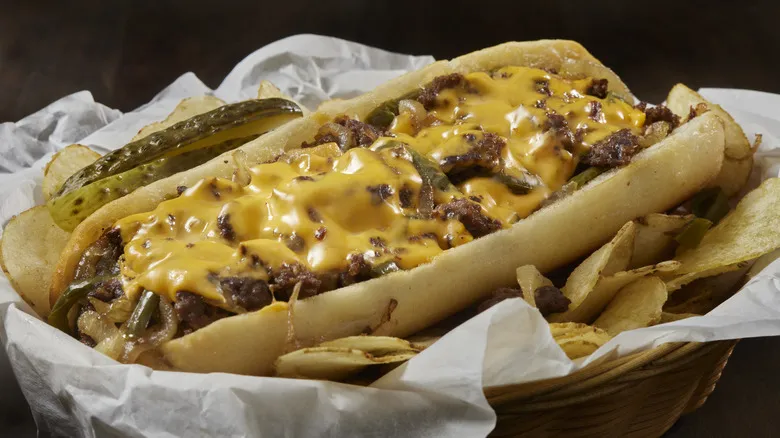
A properly crafted Philly cheesesteak should be a bold celebration of meat, yet it shouldn't require a workout to chew. Forget about grilling an entire steak and just tossing it onto a roll with some toppings—calling that a cheesesteak is a misnomer. Anyone who believes that is mistaken about what a genuine Philly cheesesteak entails. The meat should be sliced into fine strips or shavings, seamlessly blended with melted cheese and grilled onions, ensuring that every bite delivers a harmonious mix of flavors.
To achieve this, you'll need to slice your meat thinly, which can be a time-consuming and tricky task, even for seasoned cooks. "Obtaining thinly sliced steak can be tough, but the effort pays off and is far superior to the frozen 'formed' steaks often found in supermarkets," says Gregorio Fierro. Home cooks are well aware that raw meat, with its soft and slippery nature, can be difficult to cut evenly. However, there's a straightforward trick to simplify the process: partially freeze the meat first, making it firmer and easier to handle. Just be cautious not to freeze it completely, or you'll end up with a rock-hard piece of meat that no one wants to tackle.
Properly chopped onions are essential
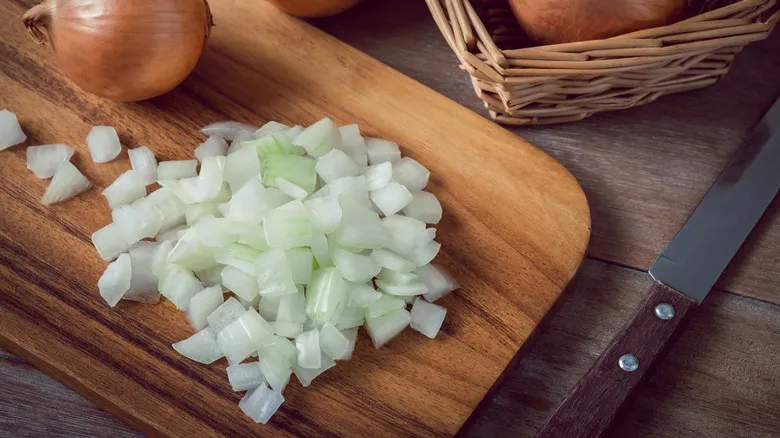
The essential elements of an authentic Philly cheesesteak include a robust roll, a generous serving of high-quality shaved meat, and a sufficient amount of gooey cheese to bind the meat together. For some purists, this is all that’s needed. However, for others, like Gregorio Fierro, a crucial addition is a hearty helping of chopped, griddled onions. "Onions are a must, in my view, and should be diced into approximately ½ inch squares," he stated. "They need to be cooked, but not caramelized, if you want to stay true to tradition."
The onions not only enhance the flavor but also provide a pleasing textural contrast. If you're preparing two large sandwiches, plan to use about half an onion. Yellow onions are an excellent (and the most traditional) option due to their savory taste and quick cooking time. Some chefs prefer sweet onions like Vidalia. While many recipes suggest sautéing chopped bell peppers with the onions for added crunch and color, this practice is not part of the Philadelphia tradition.
Season your meat generously on the griddle

Exceptional dishes often inspire creative twists and variations, and a quick online search for Philly cheesesteak recipes will showcase a wide range of interpretations of this classic meal. Some recipes suggest using finely chopped or shaved meat, while others advocate for slightly larger cuts. While some cooks season the meat with just a hint of salt and pepper, others opt for marinades to enhance the dish's complexity.
However, this latter step is not part of the traditional approach; in Philadelphia, chefs typically prefer to highlight the natural flavors of the meat and cheese. Diners seeking bolder tastes can request additions like pickled hot or sweet peppers, which are widely accepted. Nonetheless, some seasoning is essential to fully elevate the meat's flavor. "Make sure to season the steak on the grill with salt and pepper," advised Gregorio Fierro. That's all you really need.
Choose your cheese wisely
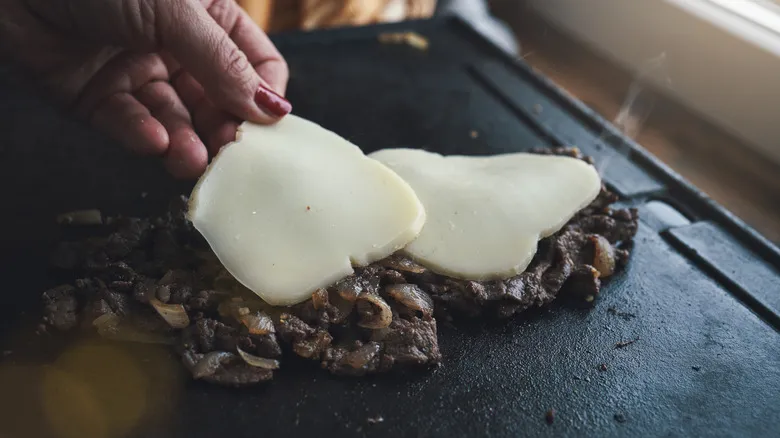
The type of cheese you choose is crucial for cheesesteaks, and it's clear why. Not only does it add creaminess and flavor, but it also provides essential structural support. As the cheese melts into the thinly sliced beef, it helps bind the meat and sautéed onions together, preventing everything from spilling out of the bun. This is why traditional cheesesteak cheeses are smooth-melting, processed options like provolone, American slices, and Cheez Whiz. This isn’t the time for your favorite artisanal Cheddar or any adventurous substitutions, as former presidential candidate John Kerry discovered the hard way. During a campaign visit to a cheesesteak shop in Philadelphia, he made the mistake of ordering a sandwich with Swiss cheese, which sparked local outrage and significantly hurt his credibility (yikes).
However, if you’re drawn to the idea of cheesesteaks but prefer to avoid processed cheese, Gregorio Fierro suggests some acceptable alternatives. "Cheez Whiz is often considered the standard (it is the original cheese, after all), but a simple processed American cheese can provide a creamier, less artificial taste," he explained. "The new favorite in the cheesesteak scene is a product called Cooper Sharp, which is a sharper yet still very melty version of American cheese." Take the advice of the experts, folks.
A flattop griddle allows efficient cheesesteak production
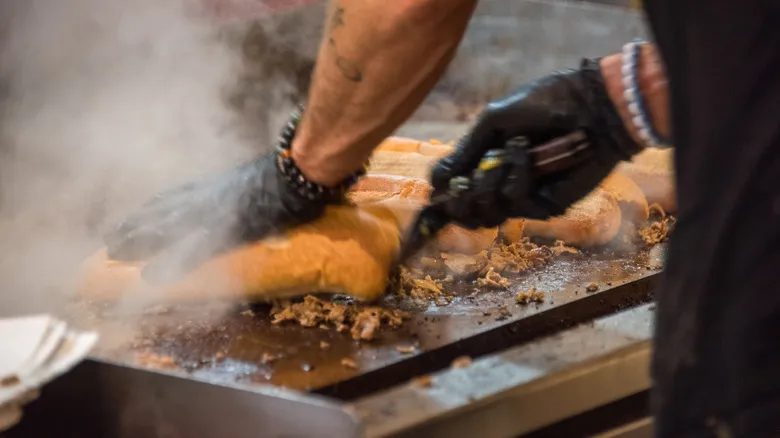
A great cheesesteak meal is a feast for the senses — the weight of a generously stuffed footlong roll in your hands, the enticing aroma of sizzling beef and onions, and the delightful blend of flavors all contribute to what makes this dish so beloved and iconic. Equally important for many is the ambiance at a classic cheesesteak shop: the rhythmic clanging of a metal spatula against a flat-top griddle as chefs skillfully mix the meat, onions, and cheese before expertly flipping the mixture into a bun.
A flat-top griddle is perfect for making cheesesteaks when cooking for a crowd, as it offers ample surface area to brown multiple portions of filling simultaneously. Experienced cooks have their technique down to a fine art, shaping the nearly cooked meat to fit the roll before lifting it and sliding it in. However, if you're preparing cheesesteaks at home, especially if you're only making a few, a large skillet will work just as well.
Start cooking right before you are ready to serve
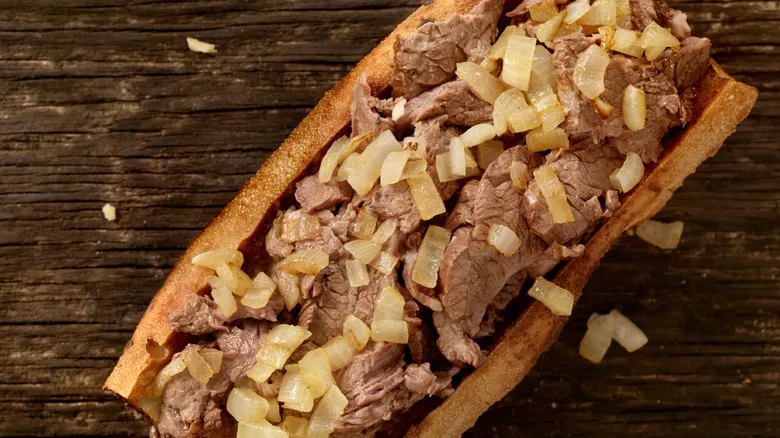
Preparing a cheesesteak is somewhat akin to whipping up a stir-fry: the majority of the effort—gathering the right ingredients and ensuring your meat and onions are properly sliced—occurs at the beginning. Since the meat is cut so thinly, the actual cooking time is only a few minutes. Moreover, cheesesteaks are best enjoyed fresh off the griddle, so it's essential to cook and assemble them just before serving.
The cooking process is swift, so make sure all the sandwich ingredients are within reach (and your fellow diners are nearby) before you begin. "Heat the griddle or skillet well, add a bit of oil, and quickly sauté the onions," advised Gregorio Fierro. "Once they have nice brown edges, add your steak. You can chop it if you like, but most people prefer to give it a quick chop at this stage." Traditionally, cooks will chop the meat with their spatulas while it cooks, but the desired fineness of the chop is subjective and depends on personal taste. After chopping, the next crucial step is: "When the steak is almost cooked, place the cheese on top of the meat," Fierro noted. It won’t be long before the cheese melts, and you’ll be ready to serve.
Here's how to melt your cheese and heat the bun at the same time
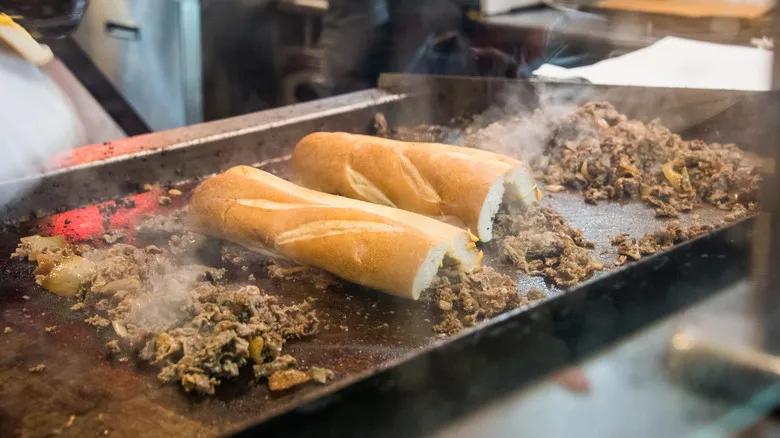
The talented chefs at premier cheesesteak joints excel not only at extracting maximum flavor from a limited selection of ingredients but also at doing so swiftly—after all, they want to keep the line of hungry customers from becoming irritable and restless. To facilitate faster service, both cheesesteak enthusiasts and chefs have created a shorthand for ordering: just mention your cheese preference and whether you want onions or not. For example, "American with" indicates a cheesesteak topped with American cheese and onions, while "wiz witout" signifies the addition of Cheese Whiz without onions (and yes, "witout" is not a typo; that's how it's pronounced in Philly).
In the spirit of efficiency, cheesesteak experts have also come up with a smart technique to melt cheese more quickly while heating the sandwich rolls: simply open the roll and place it over the mound of meat and cheese on the griddle or in the skillet. This method acts like a lid, directing more heat onto the cheese for faster melting while simultaneously warming the roll. Even better, if executed properly, this setup simplifies the final assembly of the sandwich. "Most will slide a large-blade spatula under the entire melty creation and flip it onto the roll," Gregorio Fierro shared with us.
Have other toppings on hand if diners want them
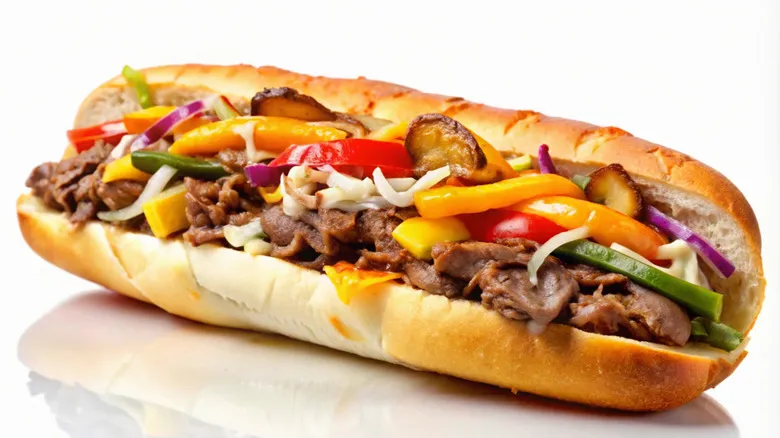
Purists argue that a true cheesesteak consists solely of a quality roll, plenty of beef and cheese, and perhaps some sautéed onions. However, even in Philadelphia, cheesesteak shops provide various options for those looking to customize their meals. If you're preparing cheesesteaks for a group, it's a good idea to offer additional toppings for anyone who wishes to enhance their sandwich.
Popular extras include pickled hot and sweet peppers, grilled mushrooms, and condiments like ketchup and mayonnaise. Some establishments allow you to make your sandwich lighter with tomato slices and lettuce, while certain cheesesteak variations feature hot sauce or even tomato sauce, transforming a cheesesteak into a pizza steak when paired with mozzarella cheese. For those cooking at home, a simple approach is to take a cue from many cheesesteak eateries and present a selection of pickles and peppers, allowing guests to customize their sandwiches as they please. You might even ask your guests for their topping preferences before heading to the grocery store, ensuring you have everything they want on hand.
Here's how to eat a cheesesteak without making a mess
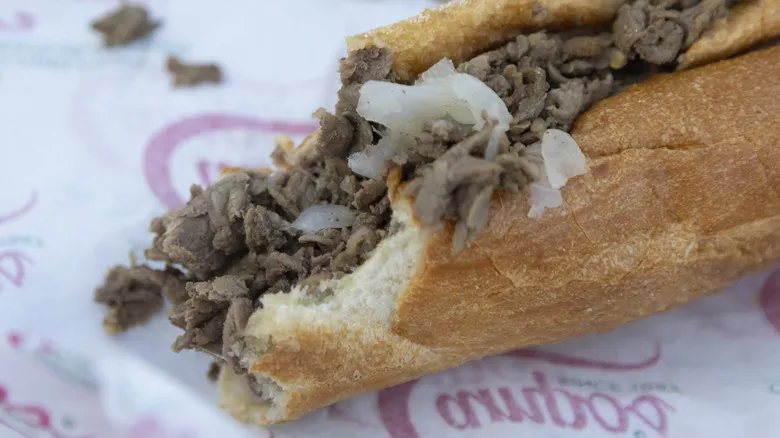
With its hearty serving of beef and melting cheese, a cheesesteak is not for the faint of heart. If you're craving one, don’t expect to keep your lipstick pristine or your fingers free of grease — that’s simply not in the cards. And if you’re one of those particularly neat diners who prefers to eat sandwiches with a fork and knife, you’ll likely struggle to find utensils sturdy enough for the job at a typical cheesesteak takeout spot (and you might look a bit ridiculous trying).
Over time, however, locals in Philadelphia have mastered the art of enjoying this messy delight without ending up covered in meat and cheese. First, make sure to eat your sandwich while standing: traditional cheesesteak shops have ledges at standing-desk height where you can enjoy your meal. Next, don’t try to lift the sandwich to your mouth like you would with a delicate tea sandwich. Instead, hold your cheesesteak over the ledge, lean in, and take a bite. Bring yourself to the food, rather than the other way around. Expect a few bits of cheesy meat to fall onto the ledge with each bite, but at least it won’t end up in your lap. Lastly, if you happen to be wearing a tie (and why not indulge in a delicious cheesesteak between important business meetings?), tuck it into your pants or shirt to avoid any drips. Emily Post might be turning in her grave at the thought, but you’ll finish your meal looking relatively composed with a satisfied stomach (and taste buds, too).
Recommended
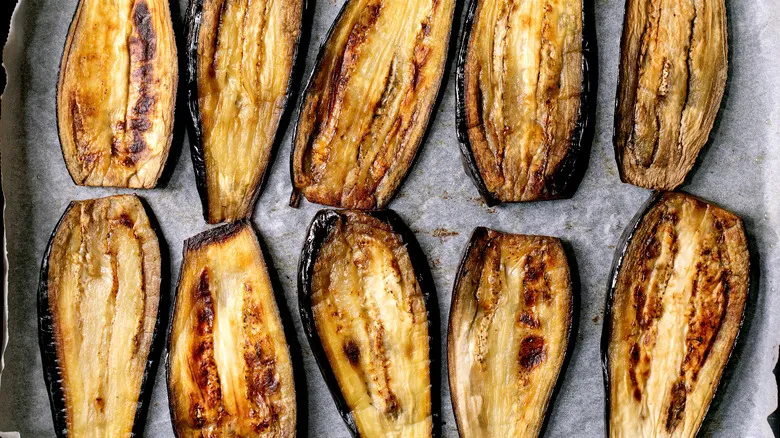
Achieve Perfect Eggplant Texture With These Ottolenghi-Approved Roasting Tips
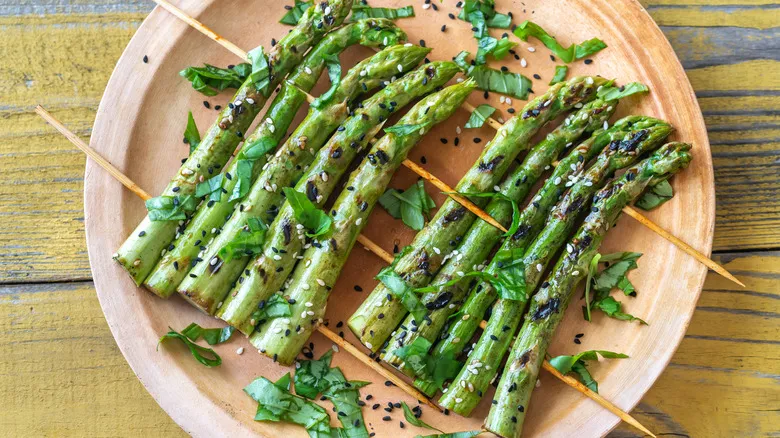
For Superior Grilled Asparagus, Try Skewering Them
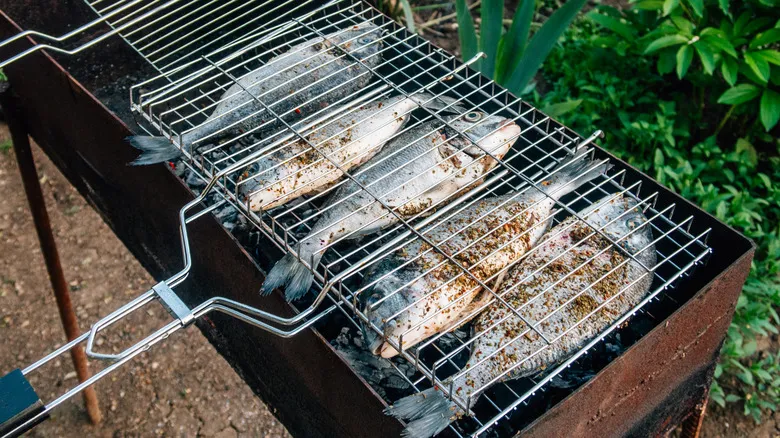
What Are Fish Grilling Baskets And When Should You Use One?
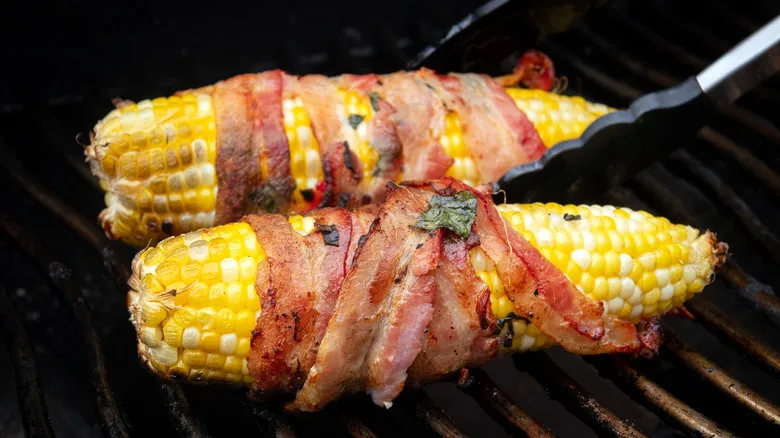
Bacon Is Your Secret For The Best Grilled Corn On The Cob Ever
Next up


